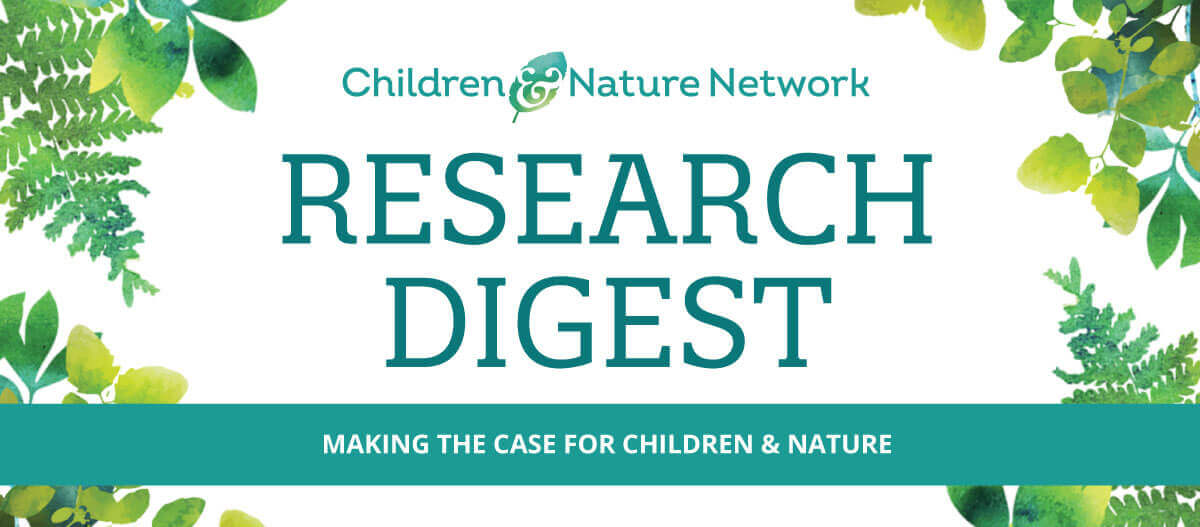Nature-based art activities can promote mental health and well-being
Children’s participation in programs that integrate art and nature may play a role in the prevention and treatment of depression, anxiety and other mental health concerns. Research in this area reveals how art-in-nature experiences have the potential to serve as an early intervention for children who are at increased risk of mental health challenges. Such programs may be especially beneficial for children in economically disadvantaged communities. Further, research indicates that nature-based art therapy — a therapeutic approach that integrates nature engagement and art therapy to promote well-being through creative expression — enables healing for youth coping with trauma and other stressors.
Nature-based art therapy supports improved mental health and well-being for youth coping with trauma and other concerns
This review synthesized findings from 11 nature-based art therapy (NBAT) studies conducted in multiple countries. Five of the reviewed studies focused specifically on children and youth experiencing trauma, abuse or other challenges. Findings indicate that NBAT improved mental health by promoting well-being, emotional regulation and stress management. NBAT also provided cognitive and social benefits while supporting awareness of environmental sustainability and a sense of belonging in nature.
Gulbe et al., 2025. Exploring nature-based art therapy: a scoping review.
Access Study
Nature and art together can support the mental and emotional well-being of children in disadvantaged communities
This study suggested that an arts-in-nature program supported children’s mental and emotional well-being, as evidenced by children’s drawings, results of a personal well-being assessment, and responses from child and adult interviews. Study participants consisted of 101 children (age 7–10) from two primary schools located in economically disadvantaged neighborhoods in the U.K. A majority of the children rated their well-being higher after participating in the program.
Moula, Walshe & Lee, 2023. “It was like I was not a person, it was like I was the nature”: The impact of arts-in-nature experiences on the wellbeing of children living in areas of high deprivation.
Access Study
Arts-in-nature programs can serve as an early intervention for children with emerging mental health challenges
The potential of an arts-in-nature program to enhance children’s well-being with the help of community volunteers was studied in six U.K. primary schools. Interviews with school staff and volunteers who led approximately 100 children (age 7–10) in eight weekly outdoor art sessions indicated that the program was beneficial to children with emerging mental health challenges. Engaging volunteers may offer a viable approach for schools to increase their capacity to support students’ mental health.
Dadswell et al., 2024. Branching out: mobilizing community assets to support the mental health and wellbeing of children in primary schools.
Access Study
Nature-based group art therapy has a positive effect on siblings of children with disabilities
This experimental study in South Korea was based on prior research showing that siblings of children with disabilities are at increased risk for emotional and behavioral difficulties. One group of 18 siblings participated in eight weekly sessions of forest-based art therapy; another group of 11 siblings did not. The benefits experienced by the art therapy group included better resistance to disease, decreased stress and improved self-esteem; the other group showed no significant change in these areas.
Kang, Kim & Baek, 2021. Effects of nature-based group art therapy programs on stress, self-esteem and changes in electroencephalogram (EEG) in non-disabled siblings of children with disabilities.
Access Study
Nature-based art activities can support children’s mental health and well-being
Teaching artists in the U.K. shared ideas about how their nature-based practices impacted children’s well-being. Themes suggest that nature-related art activities have potential to promote children’s agency and confidence while providing inspiration for creativity. Although results are based on a small-scale qualitative study, they support the idea that nature-based art activities might play an important role in the prevention and treatment of mental health concerns, such as depression and anxiety.
Walshe, Lee & Smith, 2020. Supporting children’s well-being with art in nature: Artist pedagogue perceptions.
Access Study





